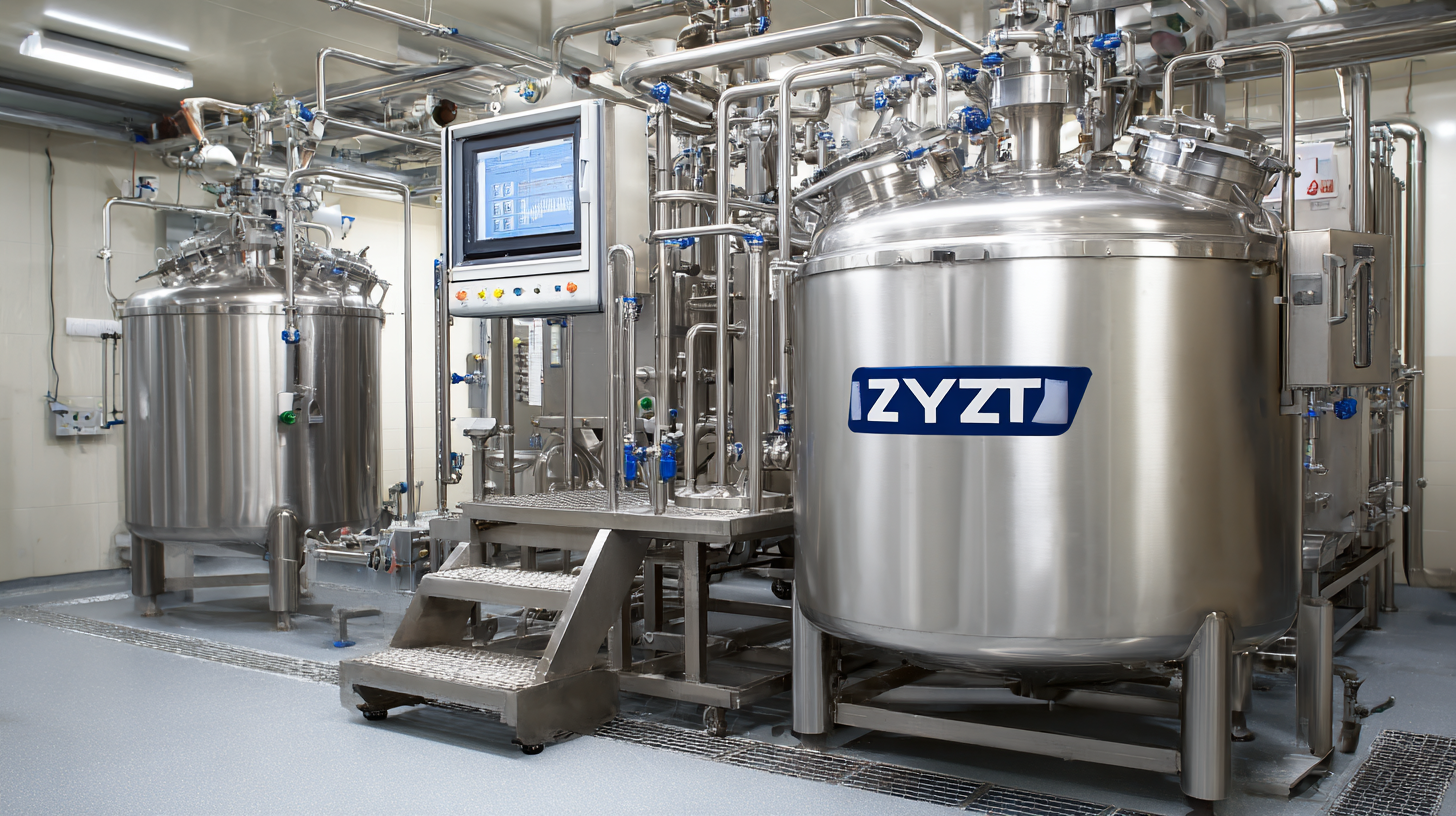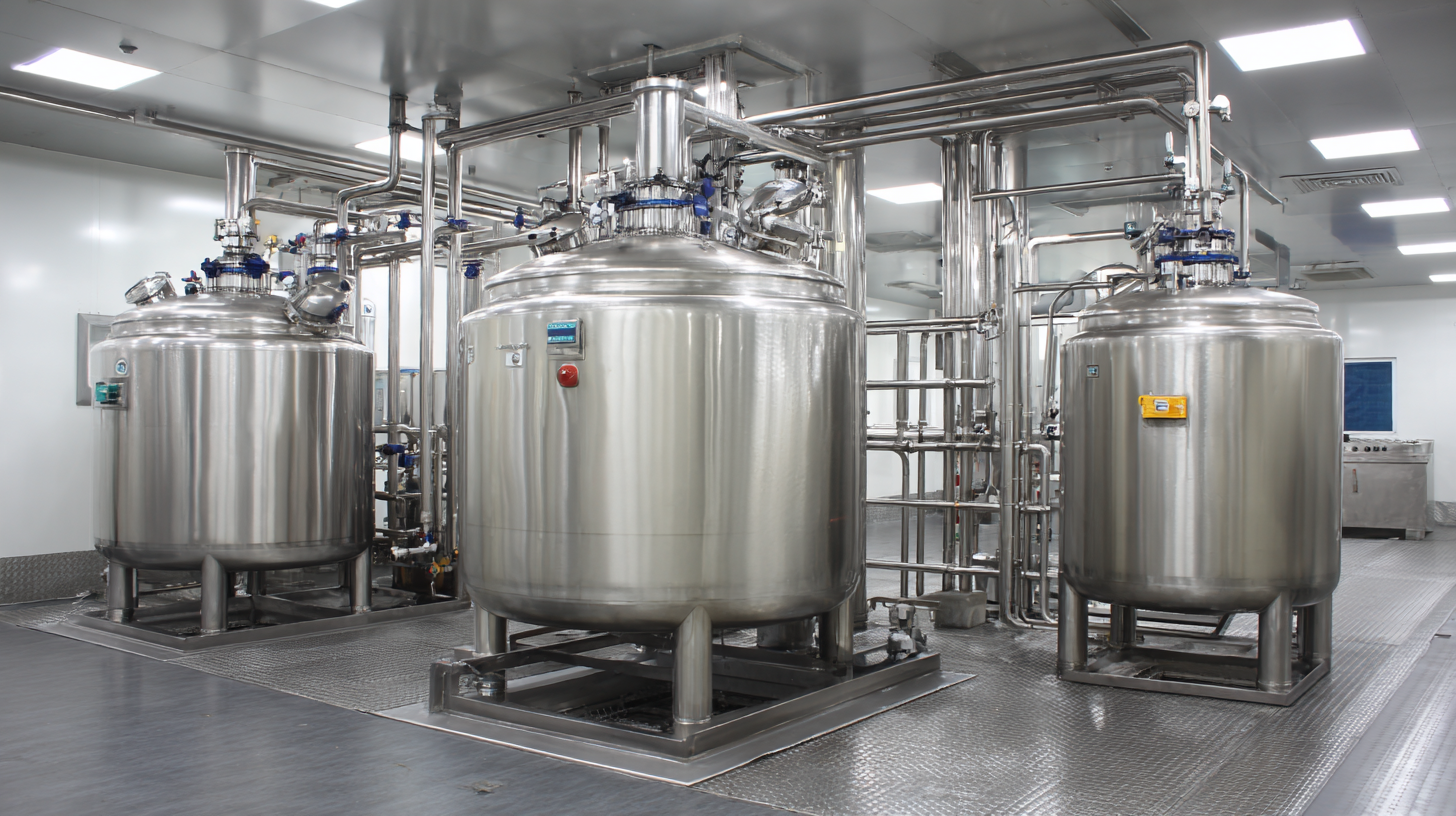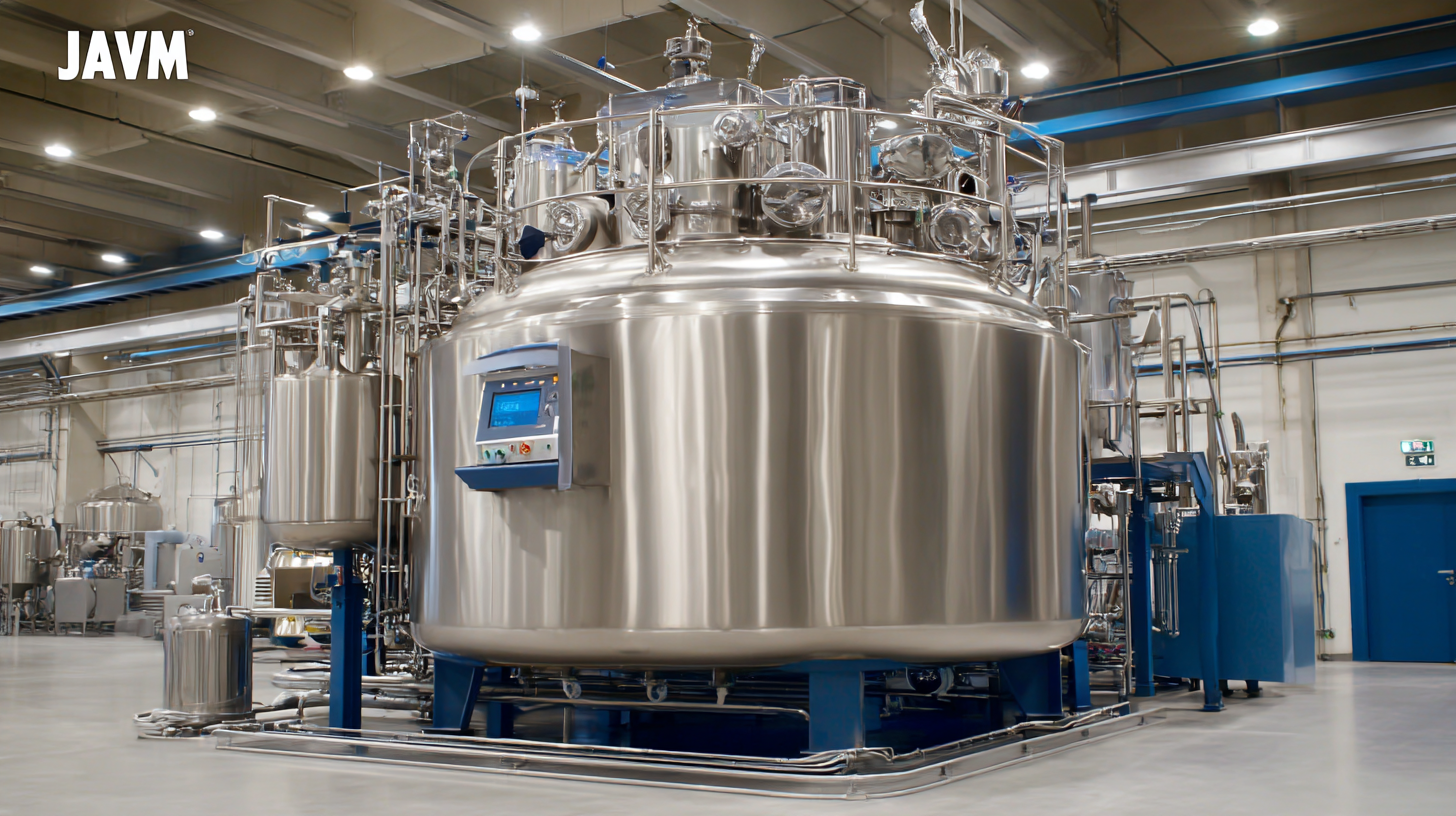
In today's competitive manufacturing landscape, selecting the right equipment is crucial to ensure efficiency and product quality. One of the essential components in various production processes is the Stainless Steel Mixing Vessel, known for its durability and versatility. A report by Grand View Research indicates that the global market for mixing equipment is projected to reach $8.78 billion by 2025, with a significant portion attributed to stainless steel vessels due to their resistance to corrosion and ease of cleaning. As industries range from food and beverage to pharmaceuticals increasingly prioritize hygienic processing, the demand for high-quality stainless steel mixing vessels is on the rise. This blog will explore seven compelling reasons why investing in the best stainless steel mixing vessel can elevate your production capabilities and address specific industry needs effectively.

 Stainless steel mixing vessels have become essential in various production processes, offering numerous benefits that enhance efficiency and product quality. One of the primary advantages is their exceptional durability. According to a study by the Stainless Steel Council, stainless steel can withstand corrosive environments and extreme temperatures, making it an ideal choice for industries such as food processing and pharmaceuticals where hygiene and material integrity are crucial. This durability can significantly reduce maintenance costs and downtime in production lines.
Stainless steel mixing vessels have become essential in various production processes, offering numerous benefits that enhance efficiency and product quality. One of the primary advantages is their exceptional durability. According to a study by the Stainless Steel Council, stainless steel can withstand corrosive environments and extreme temperatures, making it an ideal choice for industries such as food processing and pharmaceuticals where hygiene and material integrity are crucial. This durability can significantly reduce maintenance costs and downtime in production lines.
Another key benefit is the versatility of stainless steel mixing vessels. They can easily accommodate different materials and products ranging from viscous liquids to dry powders. A report by the International Journal of Food Engineering noted that stainless steel vessels can maintain consistent mixing speeds and temperatures, leading to uniformity in product quality. This attribute is particularly vital in food and beverage industries, where consistent taste and safety are paramount.
Tip: When selecting a stainless steel mixing vessel, consider the tank's design and the specific application needs. Customize features such as agitation speed and heating elements to align with your production goals. Additionally, always assess the certification standards to ensure compliance with industry regulations.
When selecting the right stainless steel mixing vessel for your production needs, several critical factors come into play. First, the vessel size and capacity must align with your production volume requirements. According to a report by the American Institute of Chemical Engineers, the optimal vessel size can improve mixing efficiency by up to 30%, making it essential to select one that meets your specific needs without excessive waste or energy use.
Another vital consideration is the type of mixing mechanism. Different processes require distinct mixing techniques—whether it's batch mixing, continuous mixing, or homogenization. A study by the International Journal of Chemical Engineering indicates that the proper selection of mixing technology can enhance product consistency and quality while reducing processing times. Additionally, the materials used in constructing the vessel should be evaluated for compatibility with the products being mixed, as chemical reactions can occur with incompatible materials, potentially compromising both safety and quality.
This chart illustrates the key factors to consider when selecting a stainless steel mixing vessel for production needs, as well as their importance on a scale from 1 to 10.
When it comes to selecting the right mixing vessel for your production needs, durability and longevity are two critical factors you cannot overlook. Stainless steel stands out as the premier choice due to its remarkable resistance to corrosion and rust. Unlike alternative materials such as plastic or non-stick coatings, stainless steel can withstand the rigors of daily use, maintaining its structural integrity and aesthetic appeal for years. This durability not only translates into lower replacement costs but also ensures that your mixing vessel can handle various ingredients without fear of degradation or contamination.
Moreover, stainless steel offers superior heat conductivity, which is essential for achieving consistent mixing results. This material heats evenly, allowing for better temperature control during production processes. Additionally, its non-porous surface prevents the absorption of odors and flavors, ensuring that your products remain pure and unaffected by previous batches. Investing in a high-quality stainless steel mixing vessel means prioritizing longevity and efficiency, making it an intelligent decision for any production environment.
| Reason | Description | Advantages |
|---|---|---|
| 1. Corrosion Resistance | Stainless steel does not rust or corrode easily, making it ideal for various production environments. | Long-lasting, low maintenance, and less risk of contamination. |
| 2. Hygiene and Cleanability | Smooth surfaces prevent bacteria buildup and make cleaning easier. | Meets sanitation standards, ensuring product safety. |
| 3. Strength and Durability | Stainless steel vessels can withstand high pressures and temperatures. | Fewer replacements and repairs needed over time. |
| 4. Versatility | Suitable for a wide range of applications, from food production to pharmaceuticals. | Adapts easily to various production lines. |
| 5. Aesthetic Appeal | Shiny, modern appearance boosting the overall production environment. | Enhances brand image and professionalism. |
| 6. Resistance to Temperature Changes | Maintains structural integrity under thermal stress. | Reliable performance across varying conditions. |
| 7. Cost-Effectiveness | High initial investment but saves money over time due to durability. | Better ROI compared to other materials. |
When considering production needs, the cost-effectiveness of investing in high-quality stainless steel mixing vessels cannot be overstated. While initially, the investment may seem higher than lower-quality alternatives, the long-term benefits significantly outweigh short-term savings. High-quality mixing vessels are designed to withstand corrosion and wear, resulting in reduced maintenance costs and extended service life. This durability allows businesses to avoid frequent replacements, ultimately saving money in the long run.
Tip: When selecting a stainless steel mixing vessel, always evaluate the warranty and after-sales support. A strong warranty can shield your investment against unforeseen issues, while robust customer support can aid in quick resolutions, minimizing downtime.
Moreover, efficient mixing enhances the quality of your products. High-quality vessels ensure uniform mixing, which leads to consistent product quality, reducing waste and increasing customer satisfaction. Investing in premium mixing equipment can thus not only cut costs associated with product recalls or customer complaints but also bolster your brand’s reputation.
Tip: Consider performing a return on investment (ROI) analysis for your mixing equipment purchase. This will help you clearly understand the potential savings and improvements in efficiency over time, solidifying your decision to invest in high-quality vessels.
When it comes to food production, the materials used in manufacturing equipment can heavily influence the quality and safety of the final product. Stainless steel stands out as the top choice for mixing vessels due to its exceptional properties. The smooth, non-porous surface of stainless steel prevents the growth of harmful bacteria, ensuring that products maintain their integrity and safety during the mixing process. This is especially critical in industries such as food and pharmaceuticals where hygiene standards are paramount.

Additionally, stainless steel is highly resistant to corrosion and temperature fluctuations, which means it can endure rigorous washing and sterilization without deteriorating. This resilience not only enhances the longevity of the mixing vessel but also preserves the quality of the ingredients being processed. By choosing stainless steel mixing vessels, manufacturers can achieve consistency in their products, as the material does not react chemically with the contents, thus maintaining flavor and quality. The commitment to using high-quality materials directly correlates with enhanced safety standards that consumers expect today, making stainless steel an indispensable choice for any production environment aiming for excellence.
